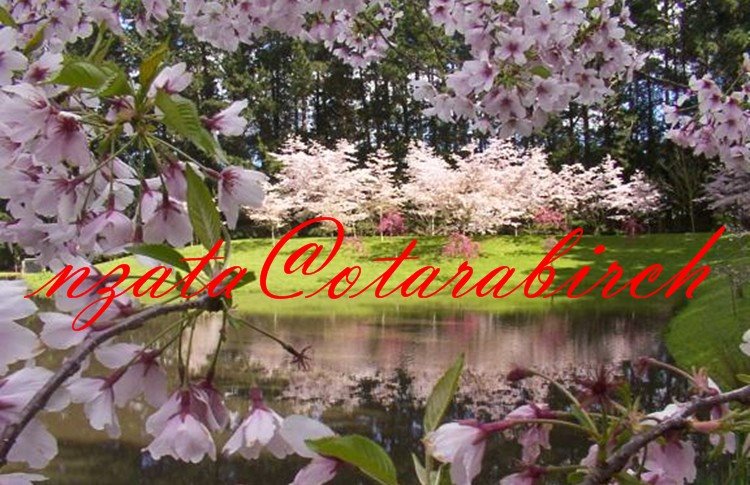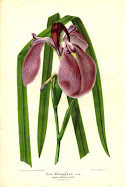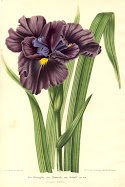 Family
Family~ Iridaceae ~Iris family.
Genus
~ Iris L. ~ Iris.
Species
~ Iris ensata ~ Japanese iris.
Iris ensata is a rhizomatous, beardless Iris species that is found growing wild all over Japan. It also grows naturally in Manchuria, Northern China, Korea, and Siberia.
This hardy perennial has attractive fountain like foliage. The leaves are dar
 k green sword - shaped leaves (the word ensata meaning sword- shaped) 20 - 60 cm (8 - 24 in) long with prominent midribs. It is widely cultivated in some parts of Japan for edible starch contained in the roots. The fibre from the leaves is a substitute for hemp and has been used for making rope, coarse cloth, thatching and basket making. The roots are very fibrous and can be used for making brooms, brushes etc.
k green sword - shaped leaves (the word ensata meaning sword- shaped) 20 - 60 cm (8 - 24 in) long with prominent midribs. It is widely cultivated in some parts of Japan for edible starch contained in the roots. The fibre from the leaves is a substitute for hemp and has been used for making rope, coarse cloth, thatching and basket making. The roots are very fibrous and can be used for making brooms, brushes etc.In mid summer tall spikes of flower stems emerge and tower above the soft reed like foliage in mass profusion. A single flower opens into a impressive 3 petal red purple flowers 7.5 - 10cm (3 - 5in) across with erect standards and pendant falls. The flowers are hermaphrodite (have both male and female organs) which is pollinated by insects with the plant being self fertile.
Cultivation I. ensata thrives in rich loamy to light well drain soils in a sunny position. This plant likes plenty of moisture. Requires a lime free soil which is slightly acid. It grows poorly in shade and does well where there is a minimum of at least 6 hours sunlight.
 This is a excellent Bog garden plant and can be grown in containers in pond margins but must be kept in a dryer condition over the winter otherwise the plant will go backwards and not do well in the following season and may die.
This is a excellent Bog garden plant and can be grown in containers in pond margins but must be kept in a dryer condition over the winter otherwise the plant will go backwards and not do well in the following season and may die.Propagation~ Seed collected from ripe pods sown in cold frames or seed trays.
~By division of the dormant rhizomes in winter or early spring. Larger divisions can be planted out into the garden while small clumps can be potted up and grown on in cold frames until they have produced good roots then planed out in the spring.
Cultivars~ Some are named forms of species but these have been developed for their ornamental value and not for their other uses.





No comments:
Post a Comment